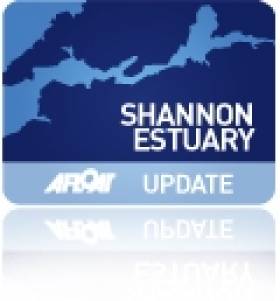Displaying items by tag: Marine Survey Office
New Workboat For Shannon Estuary
Delivery of the vessel from Mooney Boats in Killybegs was down along the West Coast of Ireland, up the Shannon estuary and through the twin locks at Ardnacrusha, to its new work place on the Lower Shannon. The Inis Muilinn is the second new vessel to enter service on the Shannon. The larger Inis Cealtra workboat commenced service on the North Shannon in 2009.
Specially designed for towing operations on inland waterways, the Inis Muilinn has a shallow draught and powerful 320hp engine to enable it tow and manoeuvre pontoons and sections of floating moorings to various locations along the Shannon. The access basket attachment for the deck crane enables ready and safe access to high navigation markers and bridges along the waterways.
Designed as a multi-purpose workboat/tug, the Inis Muilinn is equipped with a Caterpillar C7 320hp engine and quick-shift Twin Disc gearbox,13 kVA Generator, Guerra deck crane and remote controlled man access basket, hydraulic bow thruster and a suite of electronic equipment including chart-plotter, radar and radio equipment. Environmentally friendly sealed tube coolers are used on both the main engine and generator. The substantial tube cooler supplied by Klima for the main engine is designed to enable the boat to operate at maximum power when travelling against the strong winter flows encountered on the Shannon.
The Inis Muilinn is a further addition to a fleet of more than 60 boats owned and operated by Waterways Ireland staff in the management and maintenance of the waterways under its remit.
The Inis Muilinn was designed and built to Waterways Irelands specification by Mooney Boats of Killybegs and their naval architects, Marine Design International. The vessel is constructed and certified to the meet the regulatory requirements of the Marine Survey Office (Dept of Transport).

























































